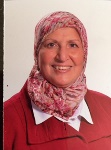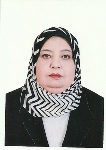Day 1 :
Keynote Forum
Felipe A Calvo
Complutense University of Madrid, Spain
Keynote: Surgical margin status and cancer patients’ outcome: The potential of intensification with intraoperative electron radiotherapy
Time : 10:00-10:40

Biography:
Felipe A Calvo obtained his initial Medical degree at the Autónoma University of Madrid (1978), finished his residency in Radiation Oncology at the University Hospital Puerta de Hierro (Madrid), and complemented his Post-graduate education as fellow at the Radiotherapy Unit of the Royal Marsden Hospital (London) and in the Department of Radiation Oncology and Nuclear Medicine at Hahnemann University (Philadelphia). In 1984, he joined the Medical staff at the University Clinic of Navarra (Pamplona) as the first specialist responsible for Radiotherapy (designated Vice-Chairman of the Department of Oncology in 1987). In 1991, he took over an academic position as Full Professor in the Department of Radiation Oncology and Nuclear Medicine at Hahnemann University, where he developed the IORT project and was, in addition, the Residency Training Program Director. He was selected Chairman of the Department of Oncology at the General University Hospital Gregorio Marañón (Madrid, Spain) in 1993, his serving position at present, which implies the coordination of an integrated Cancer Center in the context of a large University Hospital. In 1995, he was promoted to Full Professor (tenure track) in Radiation Oncology at the Complutense University of Madrid (Spain), where, since 2006 he is Hospital Vice-Dean of the Medical School. In 2007, he obtained a permanent position as university-vinculated Chair-Professor. He has been Vice-President of the Spanish Association of Radiotherapy and Oncology, President of the Spanish Commission of Radiation Oncology and Founding President of the International Society of Intraoperative Radiation Therapy. He belongs to the editorial board of the International Journal of Radiation Oncology Biology and Physics, Radiotherapy and Oncology and Clinical & Translational Oncology.
Abstract:
Intraoperative delivered electron beam irradiation (IOERT) is a super-precise (real time vision control and surgically guided irradiation) technique for dose-escalation local cancer treatment strategies. As a component of treatment it has been tested in a variety of cancer sites and histological subtypes in which the combination of surgical resection and external beam radiotherapy is recommended for local treatment. IOERT boost to the tumor bed for dose-escalation has proven to promote high local control rates in breast, rectal, pancreatic, esophago-gastric bone and soft tissue sarcomas and oligo-recurrent disease. Electron (IOERT) boost doses in the range of 10-20Gy combined with external beam conventional fractionation (45-50Gy) and RO surgical resection achieved local control rates > 90% in all the disease models mentioned and > 50% in R1 status. Our reported institutional experience includes > 600 patients with primary cancers locally advanced boosted with IOERT and > 300 with oligo-recurrent cancer rescued with IOERT containing maximal surgical effort. R status, tumor fragmentation, proven radioresistance (previous radiotherapy), interval to recurrence, differentiation and size are a constellation of adverse factors for low-regional control that will be discussed in the different cancer models analysed. Intraoperative electron irradiation, as a component of treatment, induces non-anecdotal cohorts of long-term surviving patients in all subgroups studied (20-50%) and local control rates ranging from 30-60%. R+ patients have an associated increased risk of distant metastasis which has to be considered for systemic intensification treatment strategies. Mature IOERT data indicates electron boost intensification in the treatment of resectable locally advanced and oligo-recurrent cancer contributes to quality cancer control for R+ patients.
- Surgical Pathology and Diagnosis | Surgical Pathology Practice Issues and Concerns | Cancer Pathology | Breast Pathology | Gynecologic Pathology | Neuro Surgery and Pathology | Gastrointestinal and Liver Pathology | Dermatopathology | Genitourinary Pathology | Histologic Pathology | Bone and Soft Tissue Pathology
Session Introduction
Felipe A Calvo
Complutense University of Madrid, Spain
Title: Surgical margin status and cancer patients’ outcome: The potential of intensification with intraoperative electron radiotherapy

Biography:
Felipe A Calvo obtained his initial Medical degree at the Autónoma University of Madrid (1978), finished his residency in Radiation Oncology at the University Hospital Puerta de Hierro (Madrid), and complemented his Post-graduate education as fellow at the Radiotherapy Unit of the Royal Marsden Hospital (London) and in the Department of Radiation Oncology and Nuclear Medicine at Hahnemann University (Philadelphia). In 1984, he joined the Medical staff at the University Clinic of Navarra (Pamplona) as the first specialist responsible for Radiotherapy (designated Vice-Chairman of the Department of Oncology in 1987). In 1991, he took over an academic position as Full Professor in the Department of Radiation Oncology and Nuclear Medicine at Hahnemann University, where he developed the IORT project and was, in addition, the Residency Training Program Director. He was selected Chairman of the Department of Oncology at the General University Hospital Gregorio Marañón (Madrid, Spain) in 1993, his serving position at present, which implies the coordination of an integrated Cancer Center in the context of a large University Hospital. In 1995, he was promoted to Full Professor (tenure track) in Radiation Oncology at the Complutense University of Madrid (Spain), where, since 2006 he is Hospital Vice-Dean of the Medical School. In 2007, he obtained a permanent position as university-vinculated Chair-Professor. He has been Vice-President of the Spanish Association of Radiotherapy and Oncology, President of the Spanish Commission of Radiation Oncology and Founding President of the International Society of Intraoperative Radiation Therapy. He belongs to the editorial board of the International Journal of Radiation Oncology Biology and Physics, Radiotherapy and Oncology and Clinical & Translational Oncology.
Abstract:
Intraoperative delivered electron beam irradiation (IOERT) is a super-precise (real time vision control and surgically guided irradiation) technique for dose-escalation local cancer treatment strategies. As a component of treatment it has been tested in a variety of cancer sites and histological subtypes in which the combination of surgical resection and external beam radiotherapy is recommended for local treatment. IOERT boost to the tumor bed for dose-escalation has proven to promote high local control rates in breast, rectal, pancreatic, esophago-gastric bone and soft tissue sarcomas and oligo-recurrent disease. Electron (IOERT) boost doses in the range of 10-20Gy combined with external beam conventional fractionation (45-50Gy) and RO surgical resection achieved local control rates > 90% in all the disease models mentioned and > 50% in R1 status. Our reported institutional experience includes > 600 patients with primary cancers locally advanced boosted with IOERT and > 300 with oligo-recurrent cancer rescued with IOERT containing maximal surgical effort. R status, tumor fragmentation, proven radioresistance (previous radiotherapy), interval to recurrence, differentiation and size are a constellation of adverse factors for low-regional control that will be discussed in the different cancer models analysed. Intraoperative electron irradiation, as a component of treatment, induces non-anecdotal cohorts of long-term surviving patients in all subgroups studied (20-50%) and local control rates ranging from 30-60%. R+ patients have an associated increased risk of distant metastasis which has to be considered for systemic intensification treatment strategies. Mature IOERT data indicates electron boost intensification in the treatment of resectable locally advanced and oligo-recurrent cancer contributes to quality cancer control for R+ patients.
Shigeru Hirabayashi
Teikyo University of Science, Japan
Title: Principles and surgical technique of cervical laminoplasty

Biography:
Shigeru Hirabayashi, an Orthopedic Surgeon, graduated from The University of Tokyo in 1978. Since 2007, he is a Professor of Department of Orthopedic Surgery of Teikyo University Hospital and a Dean of Faculty of Medical Sciences of Teikyo University of Science. His special field is compressed myelopathy due to degenerative spinal diseases such as cervical myelopathy (spondylotic, OPLL: Ossification of the posterior longitudinal ligament), and thoracic myelopathy (OPLL, OLF: Ossification of the ligamentum flavum).
Abstract:
The principles of cervical laminoplasty are to decompress the spinal cord posteriorly for patients with spinal canal stenosis at multiple levels and/or anterior space occupying lesion at two or more levels, to preserve the posterior anatomical structures as much as possible, and to steadily maintain the enlarged spinal canal by using spacers. Cervical laminoplasty is divided into two types from the viewpoint of osteotomy site: Open-door type and Double-door type. Although the clinical results are about the same, each has advantages and disadvantages. In Open-door laminoplasty, after making a longitudinal groove of 3 mm in width along the lamina-facet junction line at the hinge side, the groove at the open side is severed longitudinally. Next, the spinous process is tilted and the hypertrophied ligamentum flavum is resected. Finally spacers are fixed. This method has advantage of easier decompression procedure because two longitudinal grooves are made. However, the pathological findings at the hinge side cannot completely be visualized. The postoperative posterior skeletal structures of the cervical spine become unsymmetrical. In double-door laminoplasty, after splitting the spinous processes and lamina centrally, a longitudinal groove of 3 mm in width is made bilaterally at the lamina-facet junction line. After opening the split spinous processes in a double-door fashion, the hypertrophied ligamentum flavum is resected. Finally spacers are fixed. This method has advantages of direct visual confirmation of bilateral decompression. The postoperative posterior skeletal structures of the cervical spine remain symmetrical. However, central split just above the dorsal surface of the dura mater is technically demanding.
Rodolfo Arcovedo
Sharp Healthcare, San Diego USA
Title: In-office preoperative sonographic axillary staging streamlines selection of patients for neoadjuvant therapy

Biography:
Rodolfo Arcovedo was awarded with a PhD from Universidad La Salle, Facultad Mexicana de Medicina, México City in the year 1991. He holds a Post-graduate training as Transitional Resident at Chestnut Hill Hospital, Philadelphia in 1993 followed by University of Illinois Metro Group Hospitals program in General Surgery from July 1993 until July 1999, Chicago. Currently, he is working as an Assistant Clinical Instructor at LECOM Medical School since 2014. His international experience includes various programs, contributions and participation in different countries for diverse fields of study. He has wide range of publications in various national and international journals. He serves as a member of various societies.
Abstract:
Background/Objective: Determining nodal status is paramount in the medical management of breast cancer. Preoperative identification of axillary involvement derives the following benefits: improved prognostic information, earlier neoadjuvant therapy, increased opportunities for breast conservation, and a pathological complete response to chemo, in a subset of patients. Despite this, many studies provide contradictory evidence of the efficacy of the utilization of diagnostic techniques in the assessment of axillary involvement. We assessed the clinical value of in-office preoperative sonographic axillary nodal staging using ultrasound (US) with/without nodal tissue sampling (NS) in patients with primary breast cancer to assist in selecting patients for neoadjuvant therapy.
Methods: 165 single-practice patients with primary breast cancer that underwent an in-office axillary US+/-NS by the surgeon were retrospectively analyzed and reviewed. Sensitivity and specificity of US+/-NS diagnosis of nodal involvement in these patients were compared against final pathological results of intraoperative Sentinel Node Biopsy (SLNBx) and/or Axillary Dissection (AxD)). Subgroups by histopathological features, age, tumor size, and BMI were created and analyzed in their potential impact on sensitivity, specificity, positive predictive value, and negative predictive value of axillary nodal involvement. Data was statistically analyzed using Student’s two-tailed t-test Graph pad software.
Result: By using US+/-NS preoperatively, the axillary nodal status of 27 patients (TP+FP) tested positive, and 138 patients (TN+FN) tested negative. The sensitivity (56.8%) and specificity (98.4%) of axillary nodal status using US+/-NS preoperatively was compared to the gold standard (SLNBx/AxD) postoperative (>90% sensitive and specific). By utilizing US+/-NS, 39 patients were determined to have an increase in the cancer staging (larger tumor size or nodal status), and 19 patients (TP) avoided SLNBx (streamlined to AxD). Ten patients that avoided SLNBx were Her2+ or triple negative. US+/-AS was more sensitive in the following groups: Age <50 years, and tumors that were T2 (P<0.085).
Conclusion: In staging breast cancer, a key element is assessing axillary nodal involvement. US+/-NS is a great tool to assist in preoperative staging. Our, albeit underpowered, study showed that the utilization of US+/-NS had the greatest sensitivity in younger patients with tumor sizes T2 or greater. The performance of this simple in-office ultrasound axillary staging allowed us to capture 11.5% more patients who were good candidates for neoadjuvant chemotherapy. Half of these patients had tumor characteristics with potential for a complete pathologic response to chemotherapy. By finding the node positive patients preoperatively, one can direct more patients to neoadjuvant chemotherapy, select those requiring axillary dissection, and plan delayed reconstruction should they need post-mastectomy radiation. Also, patients selected for axillary dissection avoided sentinel lymph node procedure. This reduced the financial and clerical burden, and patient apprehension.
Nafissa El Badawy
Ain Shams University, Egypt
Title: Value of GATA-3 expression in diagnosis of metastatic breast carcinoma

Biography:
Nafissa El Badawy is a professor of pathology, Ain Shams University, Cairo, Egypt and president of the scientific council of the Egyptian board of pathology. She has graduated from the faculty of medicine from Ain Shams University, Cairo, Egypt 1978 followed by the fellow of Emory University, Atlanta, Georgia, USA 1990. In 1994, she was a fellow of Heinrich Hein University, Dusseldor, Germany.
Abstract:
Background: Triple negative breast carcinomas and about half of metastatic breast carcinomas are negative for estrogen receptor (ER), gross cystic disease fluid protein 15 (GCDFP-15), and mammaglobin (MGB) which are commonly used as breast-specific immunomarkers. However, GATA-3 has emerged recently as a sensitive and relatively specific immunomarker for breast and urothelial carcinomas, but the data documenting its expression in different molecular subtypes of breast carcinomas are limited. Also, few studies have specifically assessed the distribution of GATA-3 among different immunohistochemical and histomorphologic subtypes of breast carcinoma, specifically, its expression in “triple-negative".
Aim: The purpose of this study is to evaluate the expression of GATA-3 in different molecular subtypes of breast carcinoma, particularly, in metastatic breast carcinomas.
Materials & Methods: A total of 85 selected cases were included in the current study categorized into: 60 cases of primary invasive breast carcinomas divided according to immunohistochemical studies for hormonal receptors into: ER positive, HER2 positive, and triple-negative subtypes. In addition, 25 cases of metastatic adenocarcinomas were also included.
Results: Overall GATA-3 expression was detected in 90% of primary breast carcinoma cases. The current study showed a highly significant statistical correlation between GATA-3 expression and the molecular subgroup of primary breast carcinomas. Positive GATA-3 expression was detected in all (luminal) ER positive cases. On the other hand, 80% of HER2 positive and 90% of triple negative subtypes showed GATA-3 expression. Moreover, 96% of the metastatic group showed positive GATA-3 labeling.
Conclusions: Our data suggest that GATA-3 is a breast-specific immunomarker, especially when encountering ER-negative and metastatic breast carcinomas.
Manar Ahmed Abdel Rahman
Mansoura University, Egypt
Title: Role of minimal panel immunostaining in accurate diagnosis of lung cancer using small biopsies

Biography:
Manar Ahmed Abdel Rahman is currently working as Faculty of Medicine at Mansoura University, Egypt. She received a Doctoral Degree (PhD) in Pathology from Mansoura University, Egypt in the 2016, followed by M.Sc. from the same university.
Abstract:
Introduction: In small biopsies standard morphology cannot specifically subtype the tumor. Histologic subtyping of lung cancer is mandatory for treatment. Immunohistochemical staining is a valuable tool for diagnosis of lung cancer.
Aim: The aim of this study was to evaluate the diagnostic accuracy of minimal panel of Napsin A, CK 5/6 and CD 56 versus H&E of lung cancer in small biopsies.
Methods: 84 small sized tissue samples were obtained. 70 samples were obtained via fiberoptic bronchoscope (FOB) and 14 samples were obtained with transothoracic CT guided tru-cut needle. All samples were stained with H&E for morphologic diagnosis, then the same samples were stained with immuno- histochemical (IHC) staining including 3 antibodies (Napsin A, CK 5/6 and CD 56), then we compared the diagnostic yield of both methods.
Results: After H&E staining, according to WHO 2004 classification: 40 cases were adenocarcinoma (AC), 10 were squamous cell carcinoma (SCC), 22 were large cell carcinoma (LCC) and 12 were neuroendocrine tumors (NET). After IHC: According to WHO 2015 classification, 54 (64.3%) were AC, 11 (13.1%) were SCC. 11 (13.1%) were NET and 8 (9.5%) were Non-Small Cell Lung Cancer NSCLC (Counterpart of large cell carcinoma in 2004 WHO classification). Napsin A was expressed in 98% (53/54), CK 5/6 in 90.9% (10/11) of SCC and CD 56 in 100% (11/11) of neuro- endocrine tumors.
Conclusion: IHC with Napsin A, CK 5/6 and CD 56 has a more diagnostic value in precise typing of different cell types of lung cancer than H&E in small biopsies.
Kokila Sreeramaiaha
Bangalore Medical College and Research Institute, India
Title: Neuroendocrine differentiated breast carcinoma- Diagnostic and prognostic implications

Biography:
Kokila Sreeramaiah has a keen interest in Immunohistochemistry, Oncopathology and Molecular Pathology. She has graduated from Rajiv Gandhi University of Health Sciences in Bangalore, India. She currently serves as Assistant Professor of Pathology at Bangalore Medical College and Research Institute, India. She has published her research in cervical carcinoma and is currently working on evaluation of diagnostic markers for oral squamous cell carcinomas. She is passionate about teaching and is actively engaged in the medical curriculum of her educational institution.
Abstract:
Neuroendocrine differentiation in breast carcinomas is rare with an incidence of 2−5%. Among the histopathological subtypes, mucinous carcinoma of breast appears to have the greatest association with neuroendocrine differentiation. This is the report of a case of infiltrating ductal carcinoma with extensive neuroendocrine differentiation. The patient, a 65-year-old elderly female clinically presented with a mass in the upper outer quadrant of the left breast. FNAC of the breast mass revealed cytological atypia and pleomorphism, suggestive of malignancy; ultrasonogram of the breast lesion was reported as BIRADS –V. Grossly the tumour measured 6×5×4 cms3. The cut surface of the tumour was grey white with areas of hemorrhage and necrosis. Microscopically, the tumor was composed of a predominant neuroendocrine component admixed with infiltrating ductal component. Extensive areas of necrosis were also evident. The tumour cells which were arranged in sheets, trabecular and lobular patterns had moderate cytoplasm with round to oval nuclei exhibiting salt and pepper chromatin. Rosette-like arrangement of tumour cells was also noted. Focally, tumor cells showed pleomorphism with abundant cytoplasm, irregular vesicular nuclei and prominent nucleoli. On immunohistochemistry, the tumour was triple negative (ER -ve, PR -ve, Her2 -ve). Neuroendocrine markers showed strong S100 positivity and patchy synaptophysin and chromogranin positivity. Results of molecular testing are awaited. This case is presented to highlight that it is important to classify neuroendocrine breast tumours as primary neuroendocrine carcinoma when more than 50% of the tumour shows neuroendocrine features and as neuroendocrine differentiated breast carcinoma when neuroendocrine features is present in less than 50% of the tumour. While primary neuroendocrine carcinoma of the breast carries a worse prognosis, neuroendocrine differentiated breast carcinoma does not confer a poor prognosis nor carry a poor clinical outcome.
Uma Nahar Saikia
Postgraduate Institute of Medical Education and Research, India
Title: Histological spectrum of pure neuritic leprosy: A tertiary centre experience

Biography:
Uma Nahar Saikia served as Professor in the Department of Histopathology, Post-graduate Institute of Medical Education and Research, Chandigarh, India. She has been a recipient of many awards and grants. Her international experience includes various programs, contributions and participation in different countries for diverse fields of study. Her research interests in Dermatopathology, Cardiovascular Pathology Endocrine Pathology and Ocular Pathology as a Professor reflect in her wide range of publications in various national and international journals. She serves as a member of various associations like International Medical Science Academy, International Society of Dermatopathologists, Indian Society of Heart Research, Indian Association of Pathologists and Microbiologists, apart from being an author for many books.
Abstract:
Introduction: Pure neuritic leprosy (PNL) is a rare presentation of leprosy and defined isolated involvement of one or more nerves by leprosy in absence of skin involvement.
Aim: The aim of this study is to assess the histological spectrum of PNL.
Materials & Methods: A retrospective analysis of all histological proven PNL cases (20) from time period June 2000 to 2016 was done. Detailed histopathological examination of nerve biopsy was performed. Myelin and axonal status were evaluated by using myelin stain and immunohistochemistry for neurofilament protein (NFP) respectively.
Results: The suspected clinical diagnosis was Hansen in 82.3%, Mononeuritis multiplex in 11.7% and demyelination in 5.8% cases. Moderate to marked perineural thickening was seen in 70.5% cases. Moderate to severe perineural and endoneureal inflammation was seen in 75% and 95% of cases respectively. Granuloma formation was seen both in endoneureal (75%) and perineureal (15%) location. Foam cell infiltration was more common in endoneureal (65%) than perineureal (20%) location. Necrosis (5%) and vasculitis (10%) were seen occasionally. Severe myelin and axonal loss was seen in 65%. Lepra bacilli were positive in 10 cases. One case had normal morphology with lepra bacilli positivity. There was no significant histological difference between lepra bacilli positive and negative cases.
Conclusion: Leprosy is known to cause endoneureal inflammation, perineural thickening, inflammation or even granulomas in PNL. Necrosis and vasculitis are rarely noted. Myelin and axonal loss are almost universal. Even if morphologically biopsy is normal, lepra stain should be performed on all the suspected PNL cases.
Nihat Acar
Çatalca Hospital, Turkey
Title: The impact of medial cuneiform bone variant measures on the severity of hallux valgus - A radiological study

Biography:
Nihat Acar is a Doctor of Medicine and has completed his Post-graduate theoretical and practical studies in Orthopedics and Traumatology at Dokuz Eylul University, Faculty of Medicine, Izmir, Turkey in 2004. He has conducted his thesis on Biomechanics entitled “The effect of different femoral stem lengths on the femoral bone in hinge type knee prosthesis”. He has worked as the Head of Orthopedics and Traumatology department in AL-Azhar University and AL-SHIFA Hospital for 5 years since 2009. He has worked with Professor Dr. Hasan Havitcioglu the Head of Orthopedics and Traumatology department, Faculty of Medicine at Dokuz Eylul University in the Biomechanical department and conducted many biomechanical researches and published papers regarding spine and trauma surgery. Currently, he is an Orthopedic Consultant at Catalca Hospital Department of Orthopedics and Traumatology in Istanbul – Turkey.
Abstract:
Background: The aetiology of hallux valgus is multifactorial in nature. The first metatarsocuneiform joint obliquity is a well-known factor in development of the deformity.
Purpose: The purpose of this radiological study is to assess the correlation of different medial cuneiform radiological measures on the severity of hallux valgus.
Methods: Full-weight bearing anteroposterior views of 152 feet with different clinical severity were obtained and were divided into four groups: without deformity, with mild, moderate and severe deformity. Three medial cuneiform angles were assessed. The first metatarsocuneiform angle, the first metatarsocuneiform slope angle and the medial cuneiform lateral tilt angle.
Results: The first metatarsocuneiform angle average values of group 1, 2, 3 and 4 were (25.16±5.74°, 27.38±6.14°, 30.27±5.62° and 34.28±6.81°) respectively. Statistical differences were detected between groups (1, 3) and (1, 4), P=0.034 and 0.001 respectively. The average values of the first metatarsocuneiform slope angle of groups 1, 2, 3 and 4 were (19.26±4.97°, 22.54±5.62°, 26.13±6.36° and 32.17±5.85°) respectively. Significant differences were detected between groups (1, 3) and (1, 4), P=0.04 and 0.023 respectively. Average values of the medial cuneiform lateral tilt angle of groups 1, 2, 3 and 4 were (80.85±4.49°, 74.56±5.28°, 62.38±6.34° and 58.78±6.25°) respectively. Statistical significances were detected between groups (1, 2), (1, 3) and (1, 4) with P=0.026, 0.018 and 0.001 respectively.
Conclusions: Increasing the medial cuneiform lateral tilt increases the first metatarsocuneiform articulation obliquity demonstrated by the increase in the first metatarsocuneiform slope angle which in term enhances the progression of varus deformity of the first metatarsal bone explained by the increase in the first metatarsocuneiform angle.
Taha Fereydouni
Arak University of Medical Sciences, Iran
Title: Intradural and intramedullary teratoma presenting in the lumbar spine: Report of a rare case

Biography:
Will be updated soon!!!
Abstract:
Intradural teratoma is an exceedingly unique phenomenon. They are tumors with the cellular constituent source of all the three germ cell layers. We herein report a case of an 18-year-old male with special pathological features. There was no history of spinal dysraphism, congenital spinal abnormalities, previous spinal surgery, or lumbar puncture. Lumbosacral spine magnetic resonance imaging revealed a well-delineated, intramedullary mass at the L2-L3 levels of the lumbar spine. Histopathological examination of the resected tumor revealed cystic spaces lined with simple columnar epithelium as well as mucus secreting epithelium, adipose tissue, salivary gland like serous cell and bundles of smooth muscle cells. Unusual histopathologic features have been seen in the case for example there were no cartilage components which are mostly found in mature teratomas, abundant pacinian corpuscle nerve endings and nerve trunks. There were no immature elements or malignant cells. Teratomas should be taken into consideration in the differential diagnosis of intramedullary lesions even when the imaging reveals tissue homogeneity.
Rajkumar S Srinivasan
The Canberra Hospital, Australia
Title: Retroperitoneal leiomyosarcoma - An enigmatic cause of bowel obstruction

Biography:
Rajkumar S Srinivasan is a Surgical Trainee from the Canberra Hospital, Australia. He has completed his Medical schooling from India and underwent surgical training in the United States prior to moving to Australia for further training. He has published and presented surgical cases in various national and international conferences.
Abstract:
Introduction: One-third of malignant tumors located in the retroperitoneum are sarcomas. The median age of presentation occurs in the sixth decade. Complete surgical resection is the optimal treatment for patients. The addition of adjuvant radiation therapy to surgical resection is associated with both a reduced risk of local recurrence and a longer recurrence-free interval, but it does not improve overall survival.
Case Presentation: An 85-year-old Caucasian female presented to the general practitioner with progressively worsening constipation for the past few months and was referred for a colonoscopy. The colonoscopy demonstrated diverticulosis but no space occupying lesions. She was admitted to the hospital following the procedure with symptoms of bowel obstruction. A CT scan demonstrated a large retroperitoneal mass lesion in the pelvis with signs of bowel obstruction. She had a hysterectomy 40 years ago but otherwise had no other significant history. After adequate optimization, she was subjected to laparotomy and the mass was excised completely. The histology confirmed a retroperitoneal leiomyosarcoma with clear surgical margins. Her postoperative recovery was uneventful and she was discharged after 5 days.
Conclusions: The review of the literature emphasizes that the management of retroperitoneal sarcomas consists of complete resection of the tumor with adjuvant radiotherapy (if the tumor is high grade) combined with surveillance for early leiomyosarcoma detection of recurrence or metastases.
Shagufta Khan
University of Cincinnati, USA
Title: The role of inflammatory infiltrate in the assessment of DCIS

Biography:
Will be updated soon!!!
Abstract:
Incidence of breast Ductal Carcinoma In Situ (DCIS) is on the rise. Previous studies have shown up to 50% of DCIS cases will recur as DCIS or progress to invasive disease; however, robust predictive factors have not been identified. DCIS is associated with inflammatory infiltrate, which varies in amount, distribution and composition. Since the immune system’s response is an important predictor of biologic behavior in cancer of other sites, we hypothesize that the level and/or type of local immune response correlates with more aggressive disease with propensity for recurrence or progression. We identified five patients with DCIS who went on to have disease recurrence, and five control subjects without disease recurrence. Sections were stained with H&E (to assess nuclear grade, necrosis and inflammation score), and immunohistochemistry (CD45, CD3, CD20, CD56, CD68, and CD138; scored for level and distribution of staining). Clinicopathologic correlation was done for disease recurrence, margin status on excision and hormone receptor status on biopsy. There was a variable lymphoplasmacytic infiltrate (LPI) in our cases. When present, this infiltrate is composed of predominantly T cells (CD3-positive cells), followed by B cells (CD20) and plasma cells (CD138). Of the 5 patients with recurrence of disease, four had moderate to severe LPI (by H&E and immunohistochemistry); in contrast, only 2 out of 5 without recurrence had moderate, and none had severe, level of infiltrate. Patients with recurrence had higher grade of DCIS, were more likely to be ER/PR negative, and have positive or close margins on lumpectomy when compared to patients without recurrence. Indeed, statistical analysis demonstrated significant positive correlation of amount of CD45-positive cells and DCIS grade (Spearman correlation, r=0.75, P=0.04). Furthermore, ER/PR status and status of margins were significantly associated with disease recurrence (P<0.05); level of LPI and nuclear grade showed a trend but not statistically significant association, presumably due to low number of patients in our study. M-1 macrophages (CD68-positive, arginase-1 negative) were part of the infiltrate; their level and distribution did not correlate with clinical outcomes. In contrast to predicting good prognosis in invasive disease, LPI in DCIS correlates with high nuclear grade and should alert the pathologist and clinician of a possibility of more aggressive disease course.

Biography:
Hanan Mohamed Abd Elmoneim received Ph.D in pathology from Glasgow Caledonian University, Scotland, United Kingdom in 2000. She served as lecturer and associate professor in the Department of Pathology at College of Medicine, University of Minia, Egypt until 2011. In 2012, she was a professor of pathology and elected as Head of Department of Pathology, College of Medicine, Minia University, Egypt. Currently, she is the professor of pathology at College of Medicine, Umm Al-Qura University, Makkah, Saudi Arabia and consultant of pathology at Umm Al-Qura University Medical Center. She has published more than 17 scientific papers with special research interests in breast, urogenital and molecular pathology.
Abstract:
Background: Telomerase enzyme is a ribonucleo-protein complex with reverse transcriptase activity. The catalytic subunit (Telomerase reverse transcriptase) TERT correlate with poor clinical outcome in various tumors. Tumors expressing this enzyme may be more aggressive and telomerase activity may be a useful prognostic marker. For soft tissue tumor little is known about telomerase activity and most of reports focus on telomerase activity in liposracomas.
Aim: To investigate the relationship between expression of the catalytic subunit of telomerase (h-TERT), cell proliferation and hypoxia in a range of soft tissue neoplasms.
Material and methods: A tissue microarray was constructed from 101 cases and whole sections were cut from 21 cases of soft tissue neoplasm. Immunocytochemistry for h-TERT, HIF-1 α, p53, p21, Rb, CD31, Ki67 and MDM2 was done. Western blotting for hTERT protein of 12 sarcomas was performed to validate h-TERT expression.
Results: h-TERT was expressed in 16% of benign and 65% of malignant neoplasms (p<0.005) with higher expression in leiomyosarcomas, synovial sarcomas, undifferentiated sarcomas and myxofibrosarcomas and lower expression in liposarcomas. h-TERT expression was significantly associated with grade (p=0.000), stage (p=0.000) and size of the tumor (p=0.02). Higher expression of HIF-1 alpha, and Ki67, and loss of Rb expression were associated with high grade sarcomas (p<0.004). Expression of p53 and MDM2, p21 and tumor vascularity were not associated with grade. High expression of HIF-1 α and Rb were significantly associated with the stage (p=0.002, 0.03).
Conclusion: hTERT is expressed in a wide range of high grade sarcomas. The positive correlations between proliferation, hypoxia and vascularity support the view that mesenchymal cells are adapted to proliferate in a hypoxic environment. Increased expression of hTERT may be part of this adaptive response.
Rajkumar S Srinivasan
The Canberra Hospital, Australia
Title: Oesophageal Carcinoma with synchronous Rectal Carcinoma - a double whammy - Case Report and literature review

Biography:
Rajkumar S Srinivasan is a Surgical Trainee from the Canberra Hospital, Australia. He has completed his Medical schooling from India and underwent surgical training in the United States prior to moving to Australia for further training. He has published and presented surgical cases in various national and international conferences.
Abstract:
Introduction: One-third of malignant tumors located in the retroperitoneum are sarcomas. The median age of presentation occurs in the sixth decade. Complete surgical resection is the optimal treatment for patients. The addition of adjuvant radiation therapy to surgical resection is associated with both a reduced risk of local recurrence and a longer recurrence-free interval, but it does not improve overall survival.
Case Presentation: An 85-year-old Caucasian female presented to the general practitioner with progressively worsening constipation for the past few months and was referred for a colonoscopy. The colonoscopy demonstrated diverticulosis but no space occupying lesions. She was admitted to the hospital following the procedure with symptoms of bowel obstruction. A CT scan demonstrated a large retroperitoneal mass lesion in the pelvis with signs of bowel obstruction. She had a hysterectomy 40 years ago but otherwise had no other significant history. After adequate optimization, she was subjected to laparotomy and the mass was excised completely. The histology confirmed a retroperitoneal leiomyosarcoma with clear surgical margins. Her postoperative recovery was uneventful and she was discharged after 5 days.
Conclusions: The review of the literature emphasizes that the management of retroperitoneal sarcomas consists of complete resection of the tumor with adjuvant radiotherapy (if the tumor is high grade) combined with surveillance for early leiomyosarcoma detection of recurrence or metastases.
Hanna Przepiera-Będzak
Pomeranian Medical University in Szczecin, Poland
Title: Serum markers of endothelial function in constellation with disease activity and lipid profile in spondyloarthritis

Biography:
Will be updated soon!!!
Abstract:
Objectives: To examine serum markers of endothelial function in spondyloarthritis (SpA).
Patients & Methods: We studied 157 SpA patients: 81 with ankylosing spondylitis (AS), 76 with psoriatic arthritis (PsA). We assessed VAS, BASDAI, DAS28, ASDAS-ESR, PASI, serum IL-18, sICAM-1, fetuin-A, ET-1, IL-6, IL-23, VEGF, EGF, CRP, ESR and lipid profile.
Results: Serum IL-18 levels were higher in SpA patients than in controls (P=0.0003). Serum IL-18 positively correlated with CRP (P=0.03), VEGF (0.03) and TC (P=0.006) in AS and with IL-6 (P=0.03) and BASDAI (P=0.03) in PsA. SpA patients, compared to controls, had 3.22 increased risk of increased serum IL-18 (95% CI 1.37–7.55, P=0.007). There were no differences of serum sICAM-1 between SpA patients and controls (P=0.2). Serum sICAM-1 positively correlated with CRP (P=0.01), ESR (P=0.01), and IL-6 (P=0.008) in AS. Serum fetuin-A levels were lower in SpA patients than in controls (P=0.001). Serum fetuin-A negatively correlated with CRP (P=0.04) and positively correlated with TC (P=0.004), LDL-C (P=0.01) and TG (P=0.004) in AS. Serum ET-1 levels were lower in SpA patients than in controls (P=0.03). Serum ET-1 positively correlated with ESR (P=0.04) and DAS28 (P=0.003) in PsA.
Conclusions: We confirmed abnormal endothelial function in SpA and markers of endothelial function correlated with disease activity and TC.

Biography:
Will be updated soon!!!
Abstract:
Background: Functional outcomes especially facial nerve injury & Frey’s syndrome during the parotid surgery represent annoying problem; as it is associated with cosmetic problems & multiple physician visits; "to minimize these outcomes" remains in question.
Purposes: The aim of this study was to find out the frequency of the functional outcomes related to the superficial & conservative total parotidectomy.
Patients & Methods: The study included 52 patients; 6 (11.5%) <35 years old, 28 (53.8%) between 35-50 years old and 18 (34.7%) above 50 years old. All patients underwent clinical evaluation, laboratory assessment, U/S, CT scan & MRI examination. All patients were undergoing either superficial or conservative total parotidectomy.
Results: In this study; immediately postoperative; facial nerve injury was observed in 20 patients; in this series, 14 (70%) developed temporary facial palsy, whereas 6 (30%) developed permanent facial paralysis. Cervical branch was the most commonly injured nerve 8 (40%). Symptomatic Frey's syndrome was observed in 5 (9.6%) and parotid leak was observed in 11 (27.5%); all were observed in superficial parotidectomy; as sialocele in 5 (12.5%) or fistula; glandular 4 (10%) or ductal 2 (5%).
Conclusions: Facial nerve injury is more common in total conservative parotidectomy than in superficial parotidectomy. Early detection of nerve injury is quite helpful to reduce the facial deformity by early reconstruction and other procedures. But parotid leak only is observed in superficial parotidectomy; most of this leak can be managed conservatively except ductal fistula. Symptomatic Frey's syndrome is more common in superficial parotidectomy.
Ghada Mohamed Abdel Salam
National Cancer Institute- Cairo University, Egypt
Title: ABC subfamily C member 10 (ABCC10) is a promising novel target in Hodgkin's lymphoma

Biography:
Ghada Mohamed Abdel Salam has completed his PhD from Cairo University, National Cancer Institute and all her doctoral research and laboratory studies from University of Birmingham, UK. She is a Lecturer of Pathology at National Cancer Institute, Cairo University. She has published 2 papers while she was working in Paul Murray Laboratory at University of Birmingham, UK and one paper while working in NCI in reputed journals.
Abstract:
Owing to the progress in its treatment, Hodgkin's lymphoma (HL) has become a potentially curable disease. However, there is a subset of HL patients has disease that is either refractory to treatment or relapses early; outcome for these groups is particularly poor. Moreover, patients receiving combined treatment are at higher risk for second malignancies. ABCC10, also known as multidrug-resistant protein 7 (MRP7), is the tenth member of the C subfamily of the ATP-binding cassette (ABC) superfamily. ABCC10 mediates multidrug resistance (MDR) in cancer cells by preventing the intracellular accumulation of certain antitumor drugs. Our study unveiled for the first time the expression pattern and effect of ABCC10 in Hodgkin's lymphoma (HL). Results of our study showed that ABCC10 is over-expressed in most HL derived cell lines and primary HL tumor cells as compared to normal B cells. Our functional studies showed that inhibition of ABCC10 by one of inhibitor (Tariquidar) had a significant dose-dependent increase in the sensitivity of HL cells to doxorubicin. Importantly, in our study we found that overexpression of TXN was considered to be a negative prognostic factor for HL patients. We showed that there is a significant positive correlation between TXN expression level in tumor cells and tumor stage, that in turn act as a covariant, as it predicted initial response to treatment. These results indicate that ABCC10 plays a role in increasing toxicity of chemotherapy on HL cells, its overexpression affect clinical outcome, and it is a potential target in HL.
Rajkumar S Srinivasan
The Canberra Hospital, Australia
Title: A rare complication of Meckel’s diverticulum causing confusion to clinical diagnosis - A case report

Biography:
Rajkumar Srinivasan is a surgical trainee from the Canberra Hospital, Australia. He completed medical school from India and underwent surgical training in the United States prior to moving to Australia for further training. He has published and presented surgical cases in various national and international conferences regularly.
Abstract:
Introduction: Meckel’s diverticulum is the congenital remnant of the vitello intestinal duct which follows the rule of 2’s (2 feet from the ileocecal valve, 2% of the population and 2 inches in length) and is rarely considered as the first differential diagnosis in a patient with right iliac fossa pain. We present a young adult with right iliac fossa pain who fit the profile of appendicitis clinically but was noted intraoperatively to have perforation at the Meckel’s diverticulum with a fish bone which is a rare phenomenon.
Case Presentation: A 34-year-old Italian man presented with acute onset lower abdominal pain more pronounced on the right. He had no significant past medical or surgical history. His clinical examination was consistent with appendicitis. A CT scan was done prior to proceeding for surgery which demonstrated a possible foreign body in the terminal ileum eroding through the wall of the bowel. He was taken to theatre with the option of an appendicectomy and possible small bowel resection. His appendix was found to be normal in appearance. An inflamed Meckel’s diverticulum that had been perforated by a fish bone was identified as the cause of the abdominal pain. A Meckel’s diverticulectomy was performed. Our patient made an uneventful recovery and was discharged after two days.
Conclusions: In spite of the rarity of Meckel’s diverticulum in patient population, it should be considered as one of the possible working diagnosis and is always a good clinical practice to look for the same intraoperatively when performing appendicectomy, particularly when the appendix appears normal. Preoperative imaging with CT scan should be considered if there is a clinical suspicion for Meckel’s diverticulitis or one of its complications.
Galal AbouElnagah
University of Alexandria, Egypt
Title: Pathological behaviors of breast cancer which could alternate surgical decisions

Biography:
Galal AbouElnagah is working as Professor and Head of Alexandria University Surgical Oncology Unit. He obtained his Diploma in Laparoscopy from European Surgical Institute, Germany in August 2000 and MD in General Surgery with Faculty of Medicine, Alexandria University in July 2003. He has an MBA in Hospital Management from Academy of Health Services, Alexandria in February 2010 and FRCS London from Royal College of Surgeons, London in Sep. 2010. He has received three best research awards from Egyptian Coloproctology Group’s 6th Annual Meeting, Egyptian Association of Surgeons’ 23rd Annual Meeting and Egyptian Association of Surgeons’ 26th Annual Meeting. He has more than 12 international and 32 national publications and more than 7 international oral, 3 international poster and 41 national presentations.
Abstract:
Surgical pathologists have a definitive role in cancer patient prognosis. The task of surgical pathologist is to provide accurate, specific, and sufficiently comprehensive information about the tumour behavior so the clinician can develop an optimal plan of treatment and estimate prognosis. The simple designation “benign” or “malignant” is not enough today. Breast cancer is not a single disease. There are distinct varieties of tumors, each with a characteristic biology. Details of breast cancer pathological behavior as the type, its differentiation, level of invasion, the number of lymph nodes with and without metastatic tumor, the presence or absence of hormone receptors, the activity of specific enzymes, ploidy, frequency of mitosis, and percentage of cells in the S-phase may all be relevant in the pathologic assessment of neoplasia. Intraoperative examination by frozen tissue sections could not usually give enough information; pathologists rely on better preservation of structure afforded by permanent tissue sections stained with hematoxylin and eosin (H & E) and occasionally other dyes. These raise the importance of preoperative diagnosis using core tissue biopsy rather than FNAC. In this presentation, the evaluation, prognostic factors, and treatment options for different pathologically different breast cancers will be discussed. Methods of surgical & oncological treatments of locally advanced cancer breast will be also discussed according to biology and clinical behavior.
El-Sayed A Abd El-Mabood
Benha University, Egypt
Title: Modification of transverse skin incision; an idea to decrease seroma after mastectomy for breast cancer

Biography:
Will be updated soon!!!
Abstract:
Background: Seroma after mastectomy represents annoying problem for the surgeon & the patient; it may delay adjuvant therapy, also is associated with prolonged recovery period and multiple physician visits; moreover it may lead to significant morbidity. Despite there are many methods for dealing with this seroma; it remains in question.
Purposes: The aim of this study was to assess the importance of making the lateral part of transverse skin incision for mastectomy; vertical along the anterior axillary fold; for decreasing post mastectomy seroma in cancer breast.
Patients & Methods: The study included 100 female patients; 11 (11%) <40 years, 66 (66%) between 40-50 years and 23 (23%) above 50 years. All patients underwent clinical evaluation, laboratory assessment, U/S & soft tissue mammography examination and tissue biopsy. All patients undergoing modified radical mastectomy during which the cases were divided into two groups (Group A) with transverse skin incision crossing the anterior axillary fold & (Group B) with modification of transverse skin incision (making its lateral part; vertical along the anterior axillary fold.
Results: The outcome revealed decreased seroma formation in group B with transverse skin incision with vertical lateral part along the anterior axillary fold to a great extent (P value < 0.01).
Conclusions: Transverse skin incision with vertical lateral part along the anterior axillary fold combat seroma formation and so this modification; not only it decreases morbidity and recovery period but also; it allows early adjuvant therapy.
Ahmed S Elgammal
Menoufia University, Egypt
Title: Apical lymph nodes dissection and low ligation of inferior mesenteric artery in the management of distal colorectal cancer

Biography:
Will be updated soon!!!
Abstract:
Aim: Curative resection of sigmoid and rectal cancer includes high ligation of the inferior mesenteric artery (IMA). However, IMA ligation compromises blood flow to the anastomosis, which may increase the leakage rate, and carries the possibility of injury of autonomic nerve plexus. Accordingly, in this study we employ a technique of lymph node (LN) dissection around the IMA, preserving the IMA and left colic artery (LCA) and compare it with high and low ligation.
Background: Nowadays surgery for colorectal cancer has been standardized both ways in open and laparoscopic approaches. But there are still debates regarding the level of ligation of the IMA: at its origin from aorta (high ligation) or below the origin of left colic artery (low ligation). The technique of apical lymph node dissection with preservation of LCA has the advantage of both, better lymph node harvest and lower postoperative complications.
Materials & Methods: This is a prospective study which included 81 patients with operable distal colorectal cancer admitted to general surgery department in Menoufia University Hospitals from May 2012 to October 2015. Cases were divided by random serial number method into three groups: group (A) 27 cases for high ligation, group (B) 27 cases for low ligation and group (C) 27 cases for low ligation and apical lymph node dissection.
Results: There was high significant difference between the studied groups regarding to the number of harvested lymph nodes with Mean±SD; 18.3±4.05 for high ligation versus 11.3+3.2 for low ligation and 17.7+3.81 for apical dissection. Also there was significant difference between studied groups as regarding the postoperative genito-urinary complications.
Conclusions: Lymph node dissection around the IMA preserving the root of the IMA and LCA was feasible by our method, without compromising operation time, blood loss or the number of harvested lymph nodes with accepted rate of postoperative complications.
